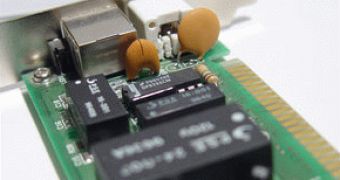Now that we live in the broadband era, working in an Internet enabled environment has become a daily routine. It seems that our computers breathe though the Internet connection. Need a new software? Check Internet? New update? Use Internet? Internet is everywhere! Even so, there are people that do not fully take advantage of the implicit opportunities that come along. In a past article, which can be consulted HERE, I mentioned an interesting way to control a computer from a remote location.
The required ingredients involved were: a PC, an Internet connection (preferably broadband) and another remote computer which should have acted as client. All this combined worked with one condition: the target PC should have already been powered on. With no power all the effort would have been in vain.
Wishing to provide you with as many useful tricks as I can, I have decided that a helping hand is needed for the situation mentioned above. I am sure you are interested to learn how to remotely power on your computer before starting a remote connection. For this trick to work you need to make sure that both your motherboard and the NIC adapter (network card) are WOL capable. What is WOL? WOL is the acronym for Wake On Lan.
This hardware feature permits the computer to be switched on through the network. Most of the motherboards and NIC adapters manufactured after 2002 are WOL enabled. In order for the WOL function to work some network adapters need to be cable connected to the moderboard (besides the normal PCI slot connection). Please consult your hardware manual for more information regarding this matter. Moreover, if you do have such hardware installed on your computer, make sure the feature is Bios enabled.
How does the process work?
In order to remotely power on your computer you need to send a "magic packet". This data packet is usually transmitted through a network connection over one of the following ports: 0, 7 or 9. (these ports can be custom selected) To be able to do this procedure, you will need to know both the IP address and the MAC address for the targeted computer. Some helpful information about the MAC address can be found here.
Do it yourself
Before attempting to do the awakening you need to prepare your computer to be responsive to the "wake up" command. Hence, copy down the MAC and the IP address. In case the computer connects to the Internet through a router you need to configure the router to open a port number and to assign it to the internal IP of the target computer. Once this move has been made you just need the external IP address and the MAC.
Now you just need an application to help you send the magic packet. There are lots of such programs available, many of them free. For instance, I tried Wake on Lan For Windows GUI. I entered the IP, MAC address and the port we were talking about and the computer magically came alive. Easy and simple!

 14 DAY TRIAL //
14 DAY TRIAL //